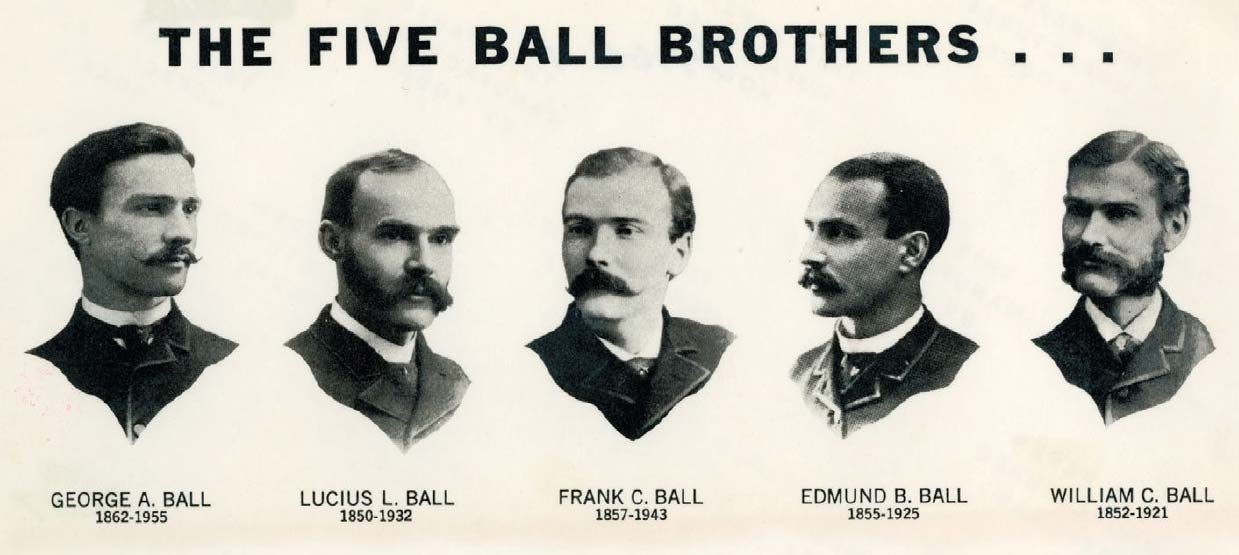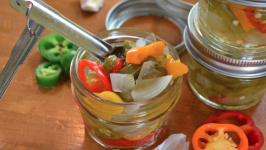Indiana's Glass Roots: How a Bottle and a Jar Became Icons
Everyone remembers anticipating the release of the state-specific quarters. What would be Indiana’s unique symbol? Maybe an ear of corn or a basketball, some people joked, and it came as no surprise when the Indiana quarter was released in August 2002 that the back was stamped with an Indy 500 race car.
What many Indiana natives might not know is that it just as well could have been a Coca-Cola bottle or a Ball Mason jar, for each of these icons has deep roots in Indiana history.
The rise of the glass industry in Indiana began in Howard County with the discovery of natural gas in 1886. Plentiful local gas meant an affordable source of power for factories and glass kilns. The 1880s saw dozens of companies relocating or starting anew in Indiana because of the state’s natural gas supply, including the Ball Brothers Glass Company, the North Baltimore Bottle Company and the Root Glass Company.
The North Baltimore Bottle Company began in Ohio, and moved to Albany in 1895, where it stayed until 1900 before taking up permanent residency in Terre Haute. It produced glass bottles for beverages, including beer companies like Schlitz in Milwaukee, and other food products. One of their top employees, Chapman J. Root, was not with the company long before leaving to start his own Terre Haute business, which he named the Root Glass Company.

Half-gallon round aqua glass BBGMCo fruit jar, 1884-86.
Originally from New York State, in 1887 the Ball brothers left their tin can making business in Buffalo, where they learned the benefit of lining their cans with glass, to join the glass industry in Indiana. The five brothers set up their first manufacturing plants in Muncie, and began work under the name Ball Brothers Glass Manufacturing Company. As business grew, the company expanded to Terre Haute in 1905, purchasing a fruit jar making plant from the Root Glass Company in 1908. The Ball brothers made various types of glass vessels, but quickly changed the focus of their business to fruit (canning) jars.
John Landis Mason originally invented the Mason jar in 1858. When the patent expired in 1884, the Ball brothers added the name Mason to their jars, creating the Ball Mason jar. The Ball Mason jar was popular not only for its utility, but for its shape (there were several molds used), lids and varying colors. One color that was particularly popular was “Ball Blue,” which is a bluer shade of aqua (recently the color was re-released as a vintage product, along with purple and green).
By 1894, the Ball Brothers Glass Manufacturing Company began distribution of its iconic fruit jars to grocery stores, marking the beginning of the consumer market for their products. Within a few years, they became the largest manufacturer of canning jars in the world, and between 1902 and 1909 they steadily built their empire by buying up eight competitors. And, in an effort to become even more appealing for at-home use, in 1909 George Ball and his wife published The Correct Method for Preserving Fruit. Domestic canning spiked in popularity during World Wars I and II as home gardening and victory gardens became more common.
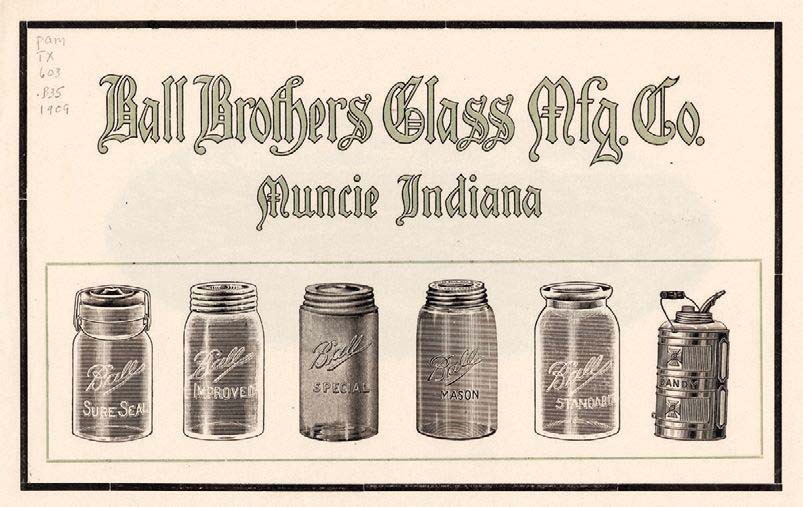 A Ball Co. marketing piece.
A Ball Co. marketing piece.
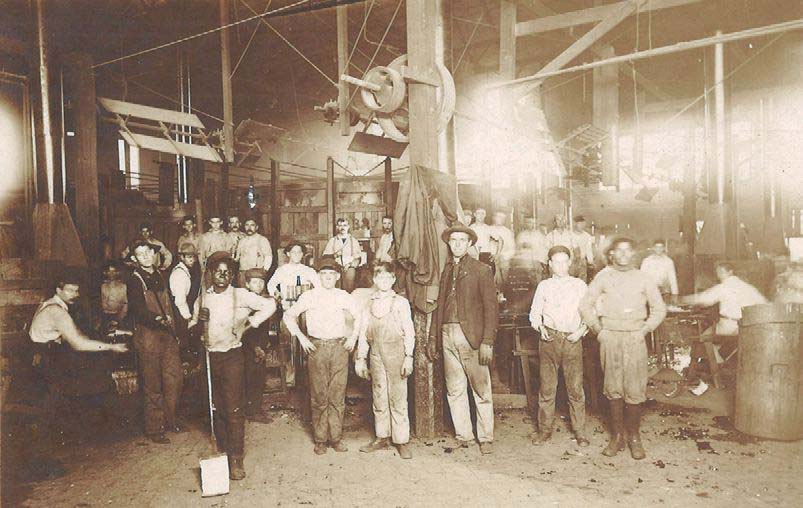 Workers at North Baltimore Glass Co. Courtesy of Vigo County Historical Society & Museum.
Workers at North Baltimore Glass Co. Courtesy of Vigo County Historical Society & Museum.
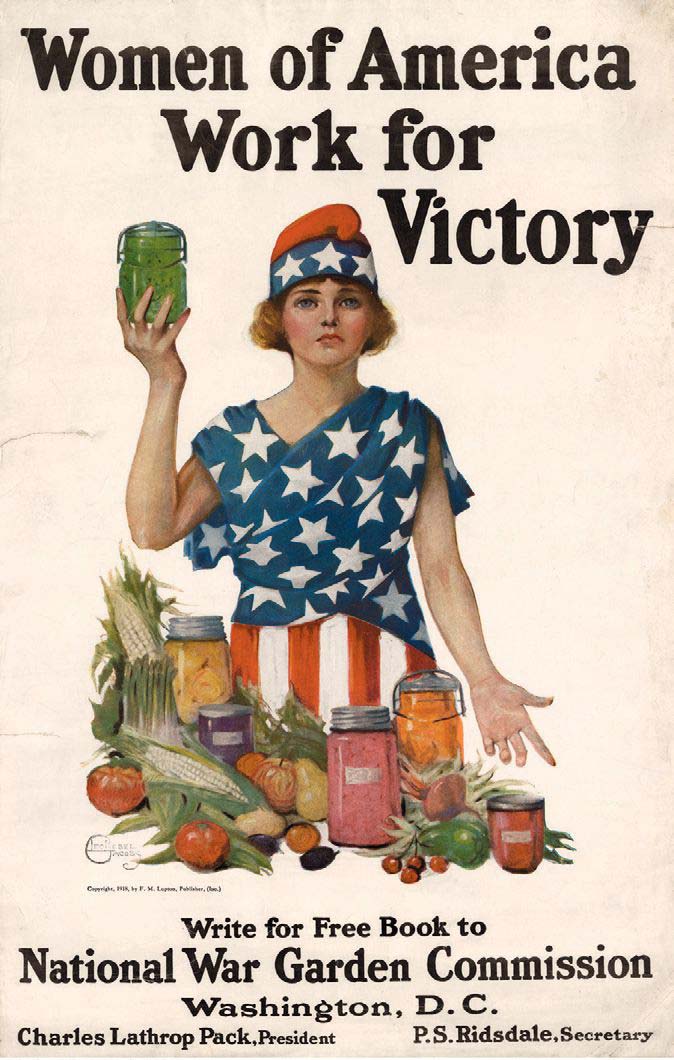 A poster from World War I. The war had a profound effect on people’s lives and women were an essential part of the war effort. Through the Indiana State Council of Defense, thousands of women organized efforts in food production, child welfare, sale of Liberty Bonds, education and propaganda, motor corps work and problems pertaining to women working in industry, 1918. Courtesy of Indiana Historical Society, (P0131).
A poster from World War I. The war had a profound effect on people’s lives and women were an essential part of the war effort. Through the Indiana State Council of Defense, thousands of women organized efforts in food production, child welfare, sale of Liberty Bonds, education and propaganda, motor corps work and problems pertaining to women working in industry, 1918. Courtesy of Indiana Historical Society, (P0131).
While business was surging for the Ball brothers, the Root Glass Company was about to make a name for itself, as well. In 1915, Coca-Cola held a contest to design a new bottle that would be so unique it could be recognized by its silhouette. The design team at the Root Glass Company won the contest; their “hobble skirt” design is still used today for the plastic, 20-ounce Coke bottle, along with modern, glass reproductions of the original bottles. The Root Glass Company did not own the Coca-Cola bottle design, but received five cents per bottle in royalties for bottles made by other companies. In 2000, ancestors of Chapman J. Root donated their family collection of Coca-Cola memorabilia to the Vigo County Historical Society Museum in Terre Haute.
Prohibition, followed by the Great Depression, caused several obstacles for glassmakers. Because much of their business was centered on beer and alcohol bottles, the North Baltimore Bottle Company and Root Glass Company sold their plants and went out of business in the early 1930s.
On the contrary, business was better than ever for the Ball Brothers Glass Manufacturing Company, which changed its named to Ball Brothers Co., Inc., in 1922. During this time, they were producing 30 glass jars a minute. The jars were being made using metal molds, numbered 1 through 15; these numbers can be found on the bottom of the original jars referencing which mold they came from. Glass collectors and historians have speculated that jars with the number 13 on them are easier to find, because during Prohibition moonshine makers may have avoided jars stamped with a 13 to avoid bad luck that could lead to getting caught illegally making alcohol.
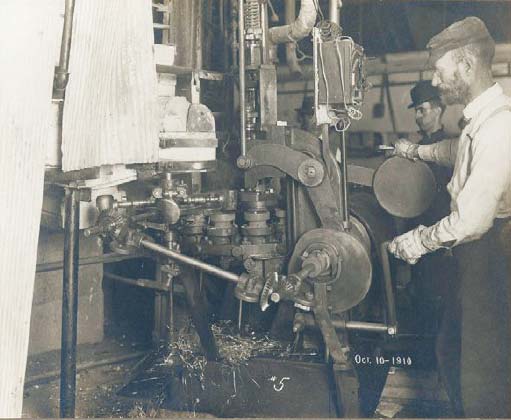
Many glass factories moved to Central Indiana during the gas boom, most notably, the Ball Brothers Glass Manufacturing Company which prospered even after the natural gas boom. 1909. . Courtesy of Minnetrista Heritage Collection, Muncie, Indiana.
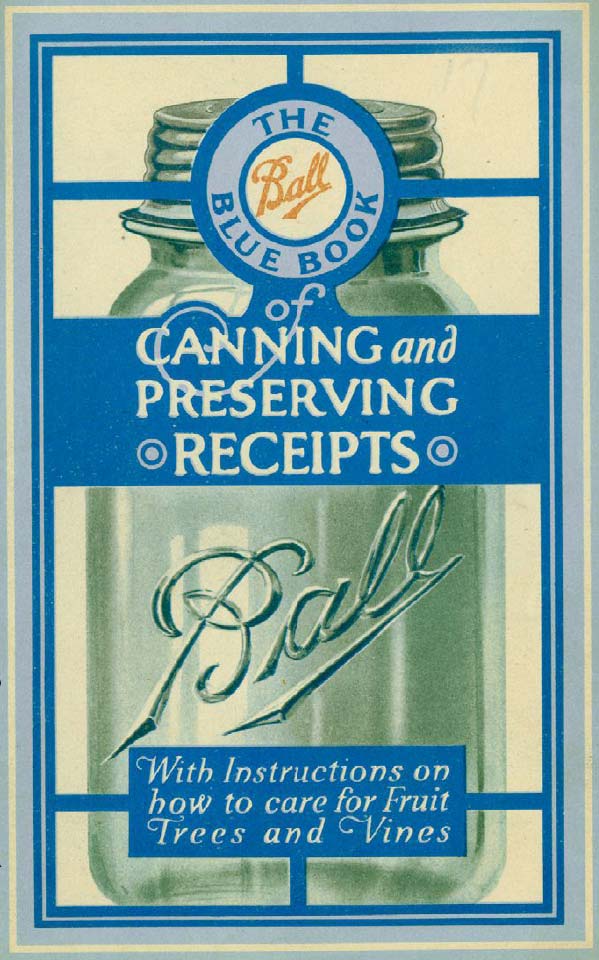
1916 Blue Book.
In 1939, after acquiring another four of its competitors, Ball was sued, along with three other companies, by the U.S. government under monopoly charges (this wasn’t the only lawsuit against Ball over the years). During this time, Ball’s interests shifted to World War II efforts, and fruit jar production made up only 10% of its manufacturing. The lawsuit lasted until 1947, when the U. S. Supreme Court decided the company wouldn’t be allowed to purchase any more businesses. The company’s inability to expand glass manufacturing, along with the death of founder Frank Ball, led the company to find new branches of industry.
In the 1950s, the company got involved in engineering space-systems products. It closed its Muncie plant in 1961 and moved glass fruit jar production to Illinois. Eight years later the company officially became the Ball Corporation. In 1993, the Ball Corporation bought Heekin Can, Inc., and became one of the largest manufacturers of metal can food containers in North America. With more profitable ventures such as engineering for aerospace companies and making metal food containers, the Ball Corporation completely withdrew from the glassmaking business in 1996. Ball Mason jars are still being manufactured in the United States by the Jarden Corporation (headquarters located in Fishers), which now owns the Ball logo and many other brands. They source the manufacturing of the glass jars from other companies, one of which is Anchor Hocking, located in Winchester, while lids and bands are made in Muncie. The jars come in a multitude of colors.
Ball Mason jars have recently experienced a major comeback in the mainstream market as consumers become more educated and interested in the origin of their food. With the growing popularity of farmers’ markets and at-home gardening, canning leftover produce has become essential in many households. The growing popularity of “throw back” traditions has also made Ball Mason jars novelty items for many uses including serving beer and beverages at local restaurants and bars, vessels for silverware and utensils, vases for fresh flowers, soap dispensers and candle holders. The new wave of interest has made the jars more widely available but they are still widely used for preserving, storage and aesthetics.
- To learn more about glass collecting, visit GlassBottleMarks.com.
- To learn more about fruit jars and canning information, and to view the many Ball canning products currently available, visit FreshPreserving.com.
- Visit the Coca-Cola bottle display at the Vigo County Historical Society Museum, at 1411 S. 6th St., Terre Haute, Tu–Su 1–4pm. To learn more, go to VCHSMuseum.org or call 812.235.9717.


